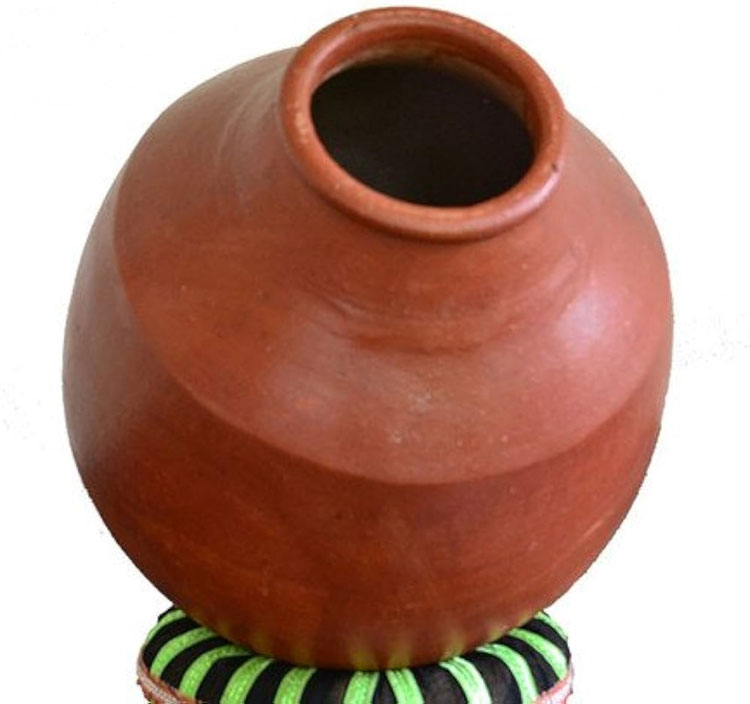The ghatam is a narrow-mouthed earthenware water pot percussion instrument that is widely used in Indian music, particularly in the Carnatic music tradition of South India. Notably, it is one of the oldest percussion instruments in India and is made from clay mixed with grounded copper, giving it a red/orange color copper appearance.
The ghatam produces a distinctive metallic sound. It is played by tapping the surface of the pot with the fingers and the base of the palm, while the player changes the pitch and resonance by varying the pressure of the pot against their stomach. It takes years for a player to perfect their skills in playing the ghatam.
To play the ghatam, the artist sits cross-legged on the floor and holds the instrument close to their body with the opening near the abdomen. The bass effect is achieved by pressing and releasing the ghatam against the abdomen and striking the body of the instrument with the lower parts of the wrists. For treble sounds, the fingers are used to strike the ghatam at different parts to produce different sounds. The playing technique and bols (syllables) used for the ghatam are similar to those used for the mridangam, another popular percussion instrument in Indian music. In concerts, the ghatam is often used together with the mridangam.
In Carnatic music, the ghatam is typically considered an additional or secondary instrument that provides accompaniment to the mridangam. However, over the last few decades, the ghatam has gained increasing popularity and has become a more prominent solo instrument as well. Furthermore, it is also finding popularity in world music and fusion genres, rock, and jazz music. The instrument is known for its unique sound and is valued for its ability to produce complex rhythms.
Ghatams are made in different sizes, each having a different pitch, and are usually found in folk music, but they have also become popular in Indian classical music genres. In Kashmir, the instrument is known as a noot and is played in an upright position. The ghatam is also similar to the ghara, a variant played in Punjab.
The smaller pots produce low-pitched sounds, while larger pots produce high-pitched sounds. The best makers of the ghatam are natives of Tamil Nadu, particularly in the area of Manamadurai near Madurai. Indeed, ghatams from this area are highly valued and are considered to be of high quality in terms of sound production.
Noyable ghatam playes: Vikku Vinayakram (Thetakudi Harihara Vinayakram); Subhash Chandran; Ghatam Karthick; RN Prakash; Giridhar Udupa; Sukanya Ramgopal; Umashankar; and Suresh Vaidyanathan.


